12 Feb Tauler & Fau – Herrero auctions coins of the Ancient World
And they are fashionable. So many people talks about Tauler & Fau – Herrero recently, and it’s no wonder. At least, we are seeing how their auctions, pioneers in the numismatic world in the online channel, are consolidated and present a great variety. This week they have auctioned collections of Spanish, medieval and modern currency, and now we can see how they have in hand an auction of ancient Greek, Roman and Byzantine currency, which will take place on February 19 at 4:00 p.m. We bring you the best selection. Ahead!
We begin with a Greek tetradrachm, from 150 a.C., coming from Aeolis, with Kyme’s head to the right on the obverse, and on the back, a horse on the right with a raised leg, under a glass with two handles. Its starting price is € 400 (see). We see that a Greek estátera from 550-450 BC comes from Lesbos, with two opposing bull heads separated by an olive branch on the obverse, and an even square with a rough surface. It is a very strange piece, which goes to auction for € 750 (see).
- Aeolis. Kyme. Tetradracma. 150 a.C. (Se-4184 variante). Precio de salida: 400€
- Lesbos. Mytilene. Estátera. 550-450 a.C. Incierta. (SNG Cop-285). Precio de salida: 750€
From the Macedonian Empire we see this estátera of Philip II from 352 – 336 a.C. On the obverse we see a head of Apollo laureate on the right, while on the reverse we see a biga gallop on the right, with a trident below. It goes to auction for € 1,800 (see). Also of Macedonian Empire we see a estátera of Alexander III the Great, of between 336 – 323 a.C. On the obverse is a head of Athena on the right, with a Corinthian helmet adorned by a serpent, and on the reverse a Victoria standing, on the left, crowned, and at her feet a Pegasus proto-type. It goes to auction for € 1,800 (see). The last coin we see from the Greek world is this tetradrachm, from the kingdom of Thrace, from 305 – 281 BC, from the period of Lysimachus. On the obverse we see the head of Alexander III Magnus diademada, with horns of Ammon, and on the reverse to Athena seated, on the left, with Victoria, spear and shield. Sale to auction for € 600 (see).
- Imperio Macedonio. Filipo II. Estátera. 352-336 a.C. Macedonia. (Gc-6663). Precio de salida: 1.800€
- Imperio Macedonio. Alejandro III Magno. Estátera. 336-323 a.C. (Gc-6701 similar). Precio de salida: 1.800€
- Reino de Tracia. Lisímaco. Tetradracma. 305-281 a.C. Alejandría. (Thomson-162). Precio de salida: 600€
We begin now with the section dedicated to the Roman world, in which we can see this Roman sestercio from the time of Caligula, 39 – 40 AD. Presents the bust of Caligula laureate on the left, and on the back the inscription ADLOCVT COH, and Caligula harangued five soldiers carrying banners. It goes to auction for € 3,200 (see). He is accompanied by this aureo of Nero, 58 – 59 AD. On the obverse it has the inscription NERO CAESAR AVG IMP, with the nude head of Nero to the right, and on the reverse, PONTIF MAX TR P (VI) COS IIII PP, around a laurel, and inside it EX SC . It goes to auction for € 1,000 (see).
- Caligula. Sestercio. 39-40 d.C. Roma. (Spink-1799). Precio de salida: 3.200€
- Nerón. Áureo. 58-59 d.C. Roma. (Ric-18). Precio de salida: 1.000€
We have another aureus, in this case of Adriano, 125 – 128 AD, with the obverse inscribed as HADRIANVS AVGVSTVS, in a laureate bust with the left shoulder draped, while on the reverse comes COS / III, with the Capitoline Wolf suckling Romulo and Remo. It goes to auction for € 2,000 (see). On the other hand, we see a last aureus of Faustina Hija, 138 – 161 AD, with the obverse inscribed as FAVSTINAE AVG P II AVG FIL, a bust coated on the right with pearl tape, while on the reverse we see VNONI LVCINAE, with Juno standing with patera and scepter. It goes to auction for € 1,900 (see). We close with this solid from the time of Anastasius, 491 – 518 AD, already in the Byzantine era, which on the reverse side has VICTORIA AVGGG inscribed, with a Victoria standing on the left with a long cross, and star in the field. Sale to auction for € 600 (see).
- Anastasio. Sólido. 491-518 d.C. Constantinopla. (S-3). Precio de salida: 600€
- Faustina Hija. Áureo. 138-161 d.C. Roma. (Cal-2061). Precio de salida: 1.900€
- Adriano. Áureo. 125-128 d.C. Roma. (Ric-193d). Precio de salida: 2.000€
Más noticias de Arte
Especialista en pintura moderna, tasadora y perito. Graduada en Historia del Arte por la Universidad de Salamanca.



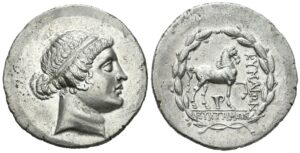
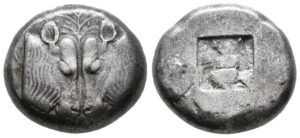
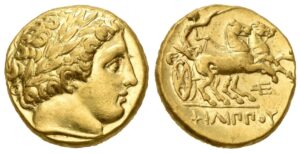
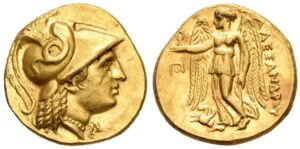
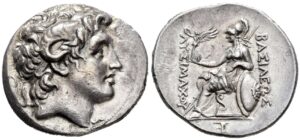
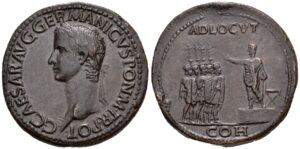
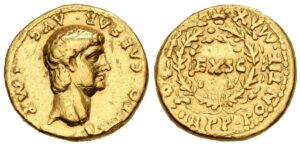
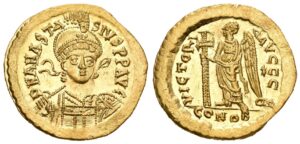
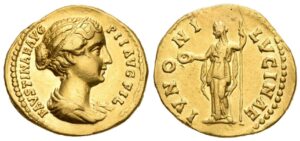
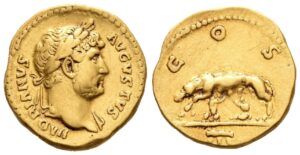


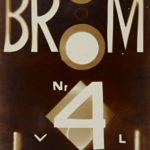
No Comments